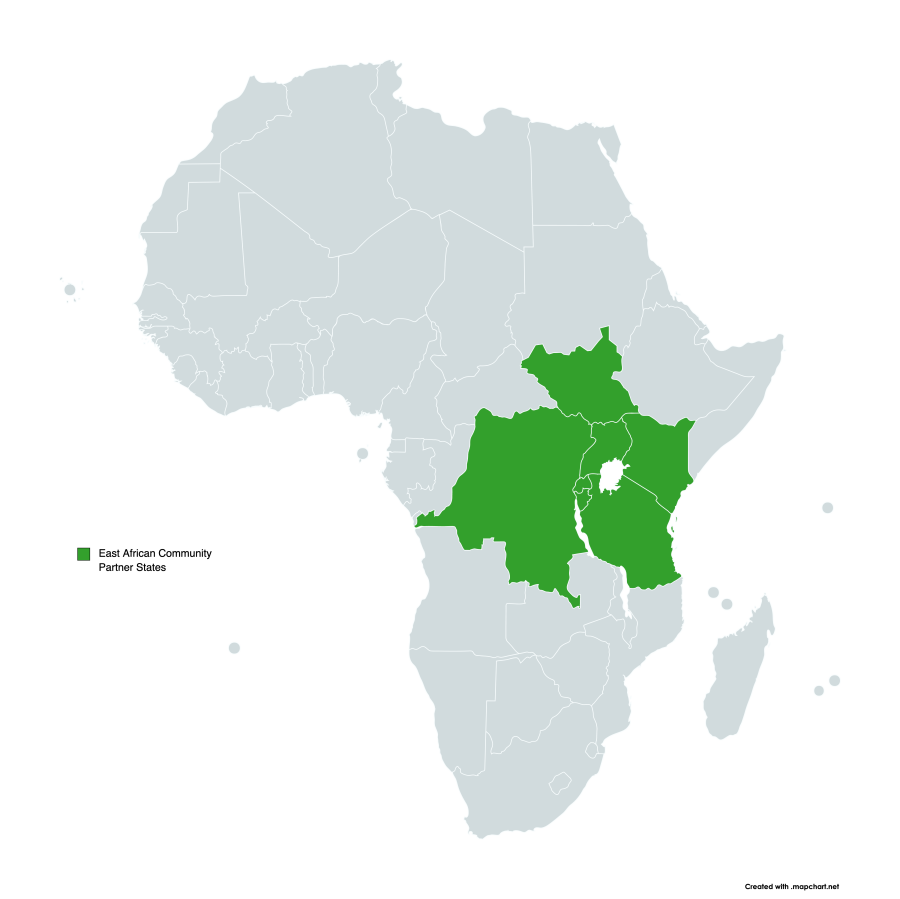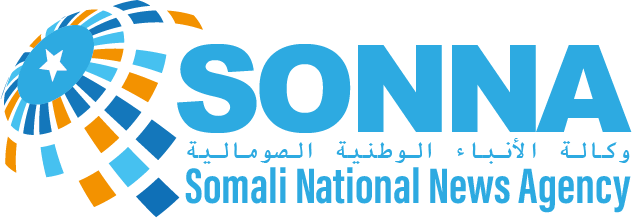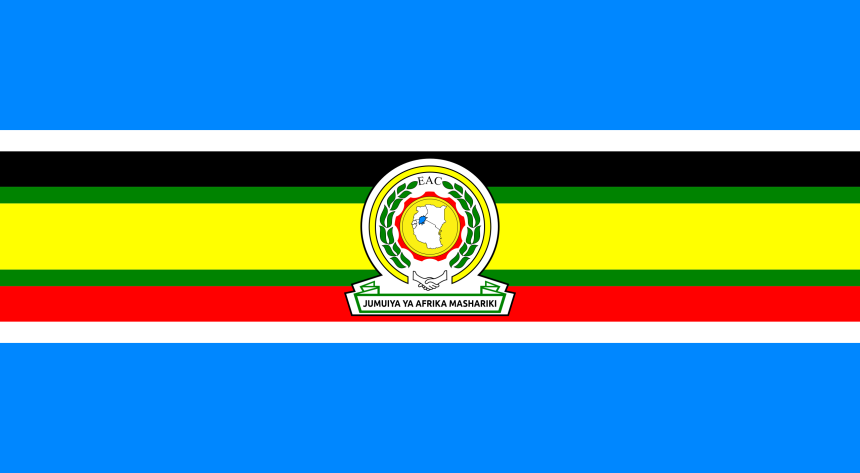Understanding the Sovereignty Imperative
A Closer Look at the East African Community Treaty and Its Implications for Somalia
Introduction
The exploration of sovereignty within the framework of regional integration, specifically under the East African Community (EAC) Treaty, holds significant relevance for Somalia. Despite occasional misinterpretations that label the EAC Treaty as a possible encroachment on the sovereignty of participating states, it is crucial to recognize that the treaty is intentionally structured to safeguard and amplify the individual sovereign rights and resources of each member nation. This article seeks to provide a comprehensive understanding of the fundamental principles and foundational elements of the EAC Treaty, delving into their nuanced implications for Somalia. By doing so, we aim to dispel misconceptions and illuminate the constructive aspects of regional integration for the country. The East African Community (EAC) stands as a testament to the pursuit of regional unity and cooperation in East Africa.
Established in 1999, the EAC is an intergovernmental organization comprising six member states: Burundi, Kenya, Rwanda, South Sudan, Tanzania, and Uganda. Originally founded with the aim of promoting economic, political, and social integration among member countries, the EAC has evolved over the years to address the dynamic challenges and opportunities facing the region. The community operates under the guiding principles of promoting sustainable development, social justice, and equality among its members.
Methods
Literature Review:
We conducted an extensive review of academic literature, historical documents, and official publications related to East Africa and the EAC. This involved accessing reputable sources such as academic journals, books, and government reports.
Official Documents and Reports:
To gather accurate and up-to-date information on the establishment and objectives of the EAC, we accessed official documents and reports published by the East African Community. This included reviewing treaties, agreements, and official publications available on the EAC’s official website and other reliable sources. We also conducted interviews with scholars, historians, and experts in East African affairs. The interviews aimed to gather nuanced perspectives, historical context, and expert opinions on the implications and significance of Somalia’s interest in joining the EAC.
Synthesis and Integration:
To synthesize the gathered information into a cohesive narrative, we employed a deductive approach by organizing information logically and synthesizing insights from various sources. Ensured that the narrative was coherent, comprehensive, and aligned with the research objectives.
This combination of literature review, analysis of official documents, expert interviews, and comparative analysis allowed for a holistic and well-informed exploration of the East African context, with a specific focus on Somalia’s interest in joining the EAC.
Historical Context of Regional Integration in East Africa
The quest for regional integration in East Africa has deep historical roots, shaped by the shared histories, cultures, and economic interdependencies of its nations. In the post-colonial era, the desire for a united East Africa gained momentum, driven by leaders such as Julius Nyerere of Tanzania, Milton Obote of Uganda, and Jomo Kenyatta of Kenya. The initial attempt at regional integration resulted in the formation of the East African Community in 1967. However, internal conflicts and geopolitical shifts led to its collapse in 1977. The revival of the EAC in 2000 marked a renewed commitment to fostering collaboration, not only in economic realms but also in addressing political stability, security, and social development in the region. This historical context illuminates the resilience of the idea of East African unity, transcending challenges to manifest as a driving force for progress and prosperity. Despite its geographical positioning within the East African region, Somalia has not yet become a member of the East African Community (EAC) due to enduring internal conflicts and the persistent political instability that has plagued the nation for an extended period. The intricate web of internal disputes and political turbulence has, thus far, hindered Somalia’s full integration into the cooperative framework of the EAC.
Historical Overview of Somalia
Somalia, nestled in the Horn of Africa, boasts a rich and complex history. Traditionally a hub for trade and cultural exchange, Somalia was home to ancient city-states and played a pivotal role in the Indian Ocean trade. In 1960, the former British Somaliland and Italian Somaliland united to form the independent Republic of Somalia. The subsequent decades saw periods of stability, but internal strife erupted in the late 20th century, exacerbated by political turmoil, clan conflicts, and the overthrow of the military regime in 1991. The absence of a central government led to a prolonged state of civil war, humanitarian crises, and the emergence of autonomous regions like Puntland and Somaliland.
Somalia Political and Economic Developments in Recent Years
In recent years, Somalia has witnessed both challenges and signs of progress. Politically, efforts to establish a more stable government gained momentum with the formation of the Federal Government of Somalia in 2012. This marked a significant step towards political reconciliation and state-building, though challenges persist, including security concerns posed by extremist groups like Al-Shabaab. Economically, Somalia’s recovery has been gradual but noticeable, with sectors such as telecommunications and remittances playing crucial roles. The country’s strategic location along key maritime routes and potential for natural resource development contribute to its economic prospects. International efforts, including peacekeeping missions and development aid, aim to support Somalia in overcoming obstacles and fostering a more sustainable and inclusive future. The complex history and recent developments set the backdrop for understanding Somalia’s position and aspirations in the context of regional organizations like the East African Community.
Constitutional Supremacy and Treaty Interplay
The bedrock of the Somali Constitution lies in its unwavering commitment to safeguarding the nation’s sovereignty, and it’s essential to recognize that EAC membership doesn’t compromise this assurance. As articulated in Article 6 of the EAC Treaty, the foundational principles guiding collaboration among partner states encompass elements such as mutual trust, political will, and sovereign equality. It’s particularly noteworthy that, as per the treaty, the constitution of each partner state holds a position of primacy over the EAC Treaty itself. This crucial safeguard ensures that nations like Somalia retain their sovereign integrity.
Central to the essence of the EAC Treaty is a pivotal principle— the profound respect for national sovereignty. Article 6 of the treaty unambiguously underscores this commitment, placing emphasis on “mutual trust, political will, and sovereign equality.” It is paramount to emphasize that, within this framework, the Somali Constitution takes precedence over the EAC Treaty. By elevating the Somali Constitution above the EAC Treaty, Somalia not only upholds its sovereign rights but also maintains the integrity of its governance structures, ensuring they remain resilient and unaltered by regional arrangements. This deliberate choice reinforces Somalia’s commitment to preserving its unique constitutional framework amid regional cooperation.
Establishment and Objectives of the East African Community (EAC)
The East African Community (EAC) emerged from a vision of regional cooperation and integration, with its roots traced back to the early 1960s. The original East African Community was established in 1967 with the signing of the Treaty for East African Cooperation by Kenya, Uganda, and Tanzania. This marked a significant step toward fostering unity among East African nations, driven by the belief that collective efforts would enhance economic growth, political stability, and social development in the region.
The primary objectives of the EAC, as outlined in its founding treaty, encompass a broad spectrum of aims aimed at creating a more cohesive and interconnected East Africa. Economic integration is a cornerstone, with the goal of establishing a common market and a customs union, facilitating the free movement of goods, services, and people across member states. The EAC also aspires to harmonize policies in key sectors such as agriculture, education, and health to promote sustainable development.
Beyond economic objectives, the EAC seeks to build a strong political and social foundation. This involves fostering political stability, good governance, and the rule of law among member states. The community aims to create a platform for addressing regional challenges collectively, be it in the realm of security, health, or environmental concerns. Additionally, cultural and social ties are emphasized, recognizing the shared heritage and diversity of East African nations.
The establishment and objectives of the EAC reflect a commitment to collaborative efforts for the mutual benefit of member states, with the belief that regional integration is a key driver for achieving lasting peace, prosperity, and sustainability in East Africa.
Member Countries and Their Contributions
The East African Community (EAC) comprises six member countries, each bringing unique contributions to the collective goals of the community. These countries are Burundi, Kenya, Rwanda, South Sudan, Tanzania, and Uganda. Each member state contributes not only in terms of its economic strengths but also adds to the cultural, social, and political diversity of the EAC. Economic contributions vary, with some nations having robust industries, agricultural sectors, or strategic geographical advantages. The diversity of contributions allows for a more resilient and comprehensive regional integration, leveraging the strengths of each member for the benefit of the entire community.
Achievements of the EAC

Over the years, the EAC has achieved significant milestones in its pursuit of economic, political, and social integration. One notable success is the establishment of a common market and customs union, facilitating the free movement of goods, services, and people across member states. This has not only stimulated cross-border trade but has also fostered a sense of unity among East African nations. The EAC has also made strides in harmonizing policies in various sectors, ranging from agriculture to education, creating a more coherent and coordinated approach to regional development. Additionally, collaborative efforts in addressing regional challenges, such as peacekeeping missions and health emergencies, highlight the effectiveness of a united front.
Key articles in EAC constitution and Somalia skepticism to join the community.
Common Market Protocol: Balancing Free Movement and Sovereignty

Article 7 of the Common Market Protocol (CMP) plays a pivotal role in this discussion. According to this Article:
“A citizen of any EAC Partner State can enter and remain in another EAC Partner State without a visa only for reasons of visiting, seeking medical treatment, traveling to another country, undertaking studies or any other lawful reason for a period of up to 6 months with a possibility of renewal.”
Contrary to skepticism about unregulated movement of people and goods, Article 7 assures that free movement is regulated and temporary. The principle ensures that there is no unchecked migration that could upset the demographic balance within Somalia or any other member state.
Operational Principles of the EAC Treaty – Article 7
Principle Variable Geometry
The principle of variable geometry permits partner states to implement integration initiatives at disparate paces. This is particularly relevant for Somalia, as it allows for flexibility in engagement without compromising national objectives or sovereignty.
Principle of Subsidiarity
For instance, In the European Union, the principle of subsidiarity dictates that collective action should only be taken when individual states’ powers are insufficient. The same logic can be applied within the EAC, thereby ensuring that decision-making authority remains as localized as possible, optimizing both efficiency and relevance the state.
Principle of Complementarity
This principle is based on respect for the primary jurisdiction of states and considerations of efficiency. It assumes that states will generally have better access to the resources necessary to carry out proceedings, reinforcing the idea of sovereignty and self-governance.
Principle of Asymmetry
Asymmetry provides for alterations in the shape, structure, or function of an object or system to create or enhance diversity, flexibility, or adaptability. Within the context of the EAC, this principle allows for countries to maintain their unique identities and capacities, further upholding their sovereignty.
Pillars of the EAC Treaty
Customs Union
The Customs Union Protocol, negotiated based on Articles 6 and 7, has significantly enhanced trade within the EAC region. Somalia stands to gain increased foreign direct investment, owing to its geostrategic location.
Common Market
Article 6 and 7 of the EAC Treaty also govern the Common Market, which allows for the free movement of goods, people, labor, services, and capital. This free movement is limited to six months without the need for a work permit, effectively quelling fears of mass immigration impacting Somalia’s coastal regions.
Monetary Union
Although there is no agreed protocol for the Monetary Union as yet, the aim is to attain a single currency for daily transactions within the Common Market, which can offer Somalia economic stability.
Political Federation
Despite the absence of a formal protocol, the ultimate aim is the formation of a super-state under a single political authority. However, it’s crucial to note that countries are neither forced nor required to participate, preserving the sovereignty of individual states, including Somalia.
Beyond the Treaty: The Path Forward for Somalia in the East African Community
The first part of this article delved into the intricacies of the EAC Treaty and its implications for Somalia. We established that the treaty not only respects but actively encourages the sovereignty of its member states, including Somalia. As we continue this discourse, it’s crucial to consider what the future holds for Somalia within the EAC, focusing on the opportunities and challenges that lie ahead.
Navigating the Skepticism: Addressing Fears and Misconceptions
Concerns about Somalia losing its sovereignty or disappearing from the map are unfounded and need to be addressed with the clear language of the Treaty. Understanding the EAC Treaty necessitates a thorough study of its fundamental and operational articles—namely Articles 6 and 7—alongside the protocols established for each of its four pillars: Customs Union, Common Market, Monetary Union, and Political Federation.
These protocols are not arbitrary; they are negotiated agreements based on the principles enshrined in Articles 6 and 7. This ensures that all member states, including Somalia, have a say in the specific operations and implementations of the Treaty.
The East African Community Treaty, buttressed by Articles 6 and 7, is designed to respect and uphold the sovereignty of its member states, Somalia included. Rather than plotting to dissolve Somalia’s sovereign status, the Treaty seeks to defend the rights and equal sovereignty of each nation.
Skepticism surrounding the EAC’s impact on Somalia not only misunderstands the Treaty but also undermines the collective endeavor to foster regional stability and prosperity. With negotiated protocols that cater to specific national concerns and priorities, the Treaty offers a framework for cooperative advancement, rather than subjugation.
Understanding the Treaty, therefore, requires a meticulous study of its articles and protocols. Dismissing it without such understanding is not only intellectually lazy but also detrimental to Somalia’s interests. The Treaty is a tool that, when understood and used judiciously, can safeguard sovereignty while paving the way for mutual benefits among its member states.
It is an opportunity for Somalia to foster economic development, enhance political stability, and realize its ambitious national goals. Given the balanced principles built into the EAC Treaty, Somalia can look forward to a future where sovereignty is not compromised but reinforced through regional integration.
Somalia’s Interest in Joining the East African Community (EAC): Rationale
Somalia’s interest in joining the East African Community (EAC) is motivated by a strategic and forward-thinking rationale that encompasses various dimensions.
A. Rationale for Somalia’s Interest
Economic Advancement: Somalia recognizes the potential economic benefits of EAC membership. Integration into a common market and customs union would open doors to increased trade opportunities with member states, fostering economic growth and development. Access to a larger market and regional investments could stimulate key sectors of Somalia’s economy.
Stability and Security: Joining the EAC provides Somalia with a platform for regional collaboration on security and stability. The community’s collective efforts in addressing common challenges, such as the threat of extremist groups like Al-Shabaab, can contribute to enhanced security measures and intelligence-sharing among member states.
Diplomatic and Political Ties: EAC membership facilitates diplomatic engagement and cooperation on political issues. Somalia can actively participate in regional discussions, contributing to decisions that affect the East African region20. The EAC serves as a forum for diplomatic dialogue, enabling Somalia to strengthen its political ties and influence in the region.
Infrastructure Development: Collaborative efforts within the EAC often extend to infrastructure projects that benefit member states. Somalia’s participation could lead to joint initiatives for improved transportation, energy, and communication networks, promoting connectivity and regional development.
B. Potential Benefits for Somalia
Trade and Economic Growth: Somalia stands to gain significantly from increased trade opportunities within the EAC. The removal of trade barriers and the establishment of a common market create a conducive environment for Somali businesses to thrive, boosting economic growth and job creation.
Investment and Development: EAC membership attracts foreign and regional investments. Somalia can benefit from infrastructure development projects, technology transfer, and expertise sharing, contributing to the overall development and modernization of the country.
Political Stability: Active participation in the EAC fosters diplomatic relationships and collaborative efforts in maintaining political stability. The EAC’s commitment to conflict resolution and peacekeeping aligns with Somalia’s aspirations for a stable political environment.
Cultural Exchange and Social Integration: Joining the EAC provides Somalia with an opportunity for cultural exchange and social integration. Shared traditions, languages, and cultural practices create a sense of unity, fostering people-to-people connections and regional cohesion.
In essence, Somalia’s interest in the EAC is driven by a comprehensive understanding of the potential benefits, spanning economic growth, political stability, infrastructure development, and cultural integration. Participation in the East African Community aligns with Somalia’s vision for a more interconnected and prosperous future within the broader East African region.
Addressing Challenges and Concerns in Somalia’s Pursuit of EAC Membership
While Somalia’s interest in joining the East African Community (EAC) holds promise, it is essential to address potential challenges and concerns that may arise during the process of integration. A proactive approach is crucial to ensure a smooth and mutually beneficial entry into the regional community.
1. Economic Disparities:
Challenge: Somalia’s economy may differ significantly from those of more developed EAC member states, potentially leading to economic disparities.
Addressing Concerns: Implementing transitional measures and development programs that focus on capacity building, infrastructure development, and inclusive economic policies can help bridge economic gaps and ensure equitable growth.
2. Political Stability:
Challenge: Somalia has experienced periods of political instability, which may raise concerns among existing EAC members.
Addressing Concerns: Somalia can demonstrate its commitment to political stability by actively participating in regional initiatives for conflict resolution, adhering to democratic principles, and strengthening governance structures. Collaborative efforts within the EAC can contribute to regional security and stability.
3. Security Issues:
Challenge: Somalia faces security challenges, particularly from extremist groups like Al-Shabaab.
Addressing Concerns: Engaging in coordinated security efforts within the EAC framework, sharing intelligence, and participating in joint peacekeeping missions can address security concerns. A collective approach to regional security enhances the overall stability of member states.
4. Capacity Building:
Challenge: Somalia may need support in building institutional and administrative capacity to fully engage in the complex mechanisms of the EAC.
Addressing Concerns: The EAC, along with international partners, can provide technical assistance, training programs, and capacity-building initiatives to strengthen Somalia’s institutions, ensuring effective participation in the community’s activities.
5. Cultural Sensitivity:
Challenge: Cultural diversity may pose challenges in terms of social integration.
Addressing Concerns: Promoting cultural exchange programs, fostering understanding, and celebrating diversity can enhance social cohesion. Emphasizing shared values and traditions can create a sense of belonging within the EAC.
6. Public Awareness:
Challenge: Public awareness and support for EAC integration may be limited.
Addressing Concerns: Implementing educational campaigns and public forums to inform and engage the Somali population about the benefits and implications of EAC membership can garner support and build a sense of national consensus.
By proactively addressing these challenges and concerns, Somalia can navigate the complexities of joining the EAC more effectively. A collaborative approach involving the Somali government, EAC institutions, and international partners will be crucial in ensuring a successful integration that brings tangible benefits to both Somalia and the broader East African region.
Recommendations for Successful Integration:
Inclusive Policies:
Recommendation: Develop policies that consider the unique circumstances of each member state.
Rationale: Ensuring the development of inclusive policies is paramount for the successful integration of Somalia into the East African Community (EAC). The diversity among member states demands a nuanced approach that respects and addresses the specific needs, economic conditions, and cultural contexts of each nation. By tailoring policies to the unique circumstances of individual member states, the EAC can foster a sense of shared ownership and commitment. This approach mitigates potential disparities, promoting an environment where all nations feel equally valued and can actively contribute to the collective goals of the community. Inclusivity is not only a principle of fairness but also a strategic imperative for building a cohesive and resilient regional alliance.
Capacity Building:
Recommendation: Invest in capacity-building programs for government officials, businesses, and institutions.
Rationale: The success of Somalia’s integration into the EAC hinges on the capacity of its institutions and human resources to effectively navigate the complexities of regional cooperation. Capacity building is an essential investment that empowers government officials, businesses, and institutions with the skills and knowledge needed for active participation in the EAC. Government officials equipped with a deep understanding of regional mechanisms can effectively represent national interests and contribute meaningfully to collaborative initiatives. Businesses, through capacity building, can adapt to regional market dynamics, foster cross-border trade, and seize opportunities for growth. Institutions, when strengthened, become pillars for sustained regional integration, providing the necessary framework for cooperation. Overall, investing in capacity building ensures that Somalia not only joins the EAC but actively engages and contributes to the community’s shared objectives.
Conclusion
In conclusion, the prospect of Somalia joining the East African Community (EAC) carries profound implications for the nation and the broader East African region. The historical overview of Somalia, the establishment and objectives of the EAC, and the examination of potential outcomes and challenges highlight a dynamic landscape of opportunities and considerations. Economically, Somalia’s integration into the EAC presents a pathway to expanded markets, resource sharing, and infrastructure development, fostering economic growth and collaboration. Politically and in terms of security, the EAC offers a platform for diplomatic cooperation, collective security measures, and conflict resolution mechanisms, contributing to a politically stable and secure East African environment. Culturally and socially, the significance of cultural exchange, social integration, and educational collaboration underscores the community-building potential of regional cooperation.
To navigate the complexities of integration successfully, inclusive policies that recognize the unique circumstances of each member state are paramount. Additionally, investing in capacity-building programs ensures that Somalia is not only a participant but an active contributor to the intricate mechanisms of the EAC. The lessons from other regional organizations and historical attempts at integration offer valuable insights, guiding Somalia towards a more informed and strategic engagement within the EAC. As Somalia contemplates its future within this regional alliance, the emphasis on collaboration becomes a cornerstone for unlocking the shared potential of East Africa. In essence, the journey towards regional cooperation is a transformative one, promising a future where economic prosperity, political stability, and cultural richness intertwine to shape a resilient and interconnected East Africa. The significance of Somalia’s potential membership in the EAC lies not only in the tangible benefits it brings to the nation but in the collective strength and unity it contributes to the broader East African community.
Paper Contributors
Anwar Abdifatah Bashir – EA Institute Director
Roble Idle – Editor





